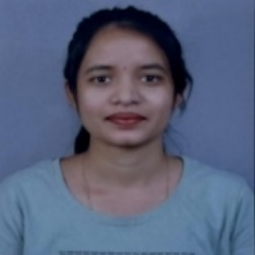International Journal of Intelligent Systems and Applications (IJISA)
IJISA Vol. 16, No. 2, 8 Apr. 2024
Cover page and Table of Contents: PDF (size: 1244KB)
Quantification of EEG Characteristics for Epileptic Seizure Detection and Monitoring of Anaesthesia Using Spectral Analysis
PDF (1244KB), PP.40-52
Views: 0 Downloads: 0
Author(s)
Index Terms
EEG, Epileptic, Anaesthesia, Seizure, Wake
Abstract
Epilepsy is considered one of the primary neurological disorders, and its treatment requires abundant technological assistance. General Anaesthesia induces distinct patterns in brain activity, with the most common being a gradual increase in low-frequency signals as the level of Anaesthesia deepens. In this instance, a method of validating epileptic seizures and Anaesthesia through the utilization of electroencephalogram (EEG) data, acquired non-invasively, is introduced. Epileptic seizures and detection of the presence of Anaesthesia approaches make use of discrete Laplace Transformation (LT), Discrete Cosine Transformation (DCT), and Fast Fourier Transform (FFT). Here, it is discussed how power spectral analysis (PSA) helps study EEG characteristics in detecting epileptic behavior and the presence of Anaesthesia. A dataset of EEG (Epileptic and Anaesthesia), which is available publicly [1,2], has been used in the propounded technique using FIR filters and LT, DCT, and FFT are used to store and process 16 channel data. Power Spectrum Density (PSD) and its average were contrasted against a specific spectrum and frequency range of a typical EEG signal to obtain the results. This work uses a technique to determine whether the patient being studied is epileptic and awake or anesthetized.
Cite This Paper
Anand Ghuli, Anil Kannur, Abhishek Mali, Aishwarya Mangasuli, "Quantification of EEG Characteristics for Epileptic Seizure Detection and Monitoring of Anaesthesia Using Spectral Analysis", International Journal of Intelligent Systems and Applications(IJISA), Vol.16, No.2, pp.40-52, 2024. DOI:10.5815/ijisa.2024.02.04
Reference
[1]UMAIR RASOOL, “EEG SIGNAL ANALYSIS”, MATLAB Central File Exchange. Retrieved April 23, 2020.
[2]Vijay Dudhal, “EEG ANALYSIS AND CLASSIFICATION”, MATLAB Central File Exchange. Retrieved April 23, 2020.
[3]G. Schirner, D. Erdogmus, K. Chowdhury and T. Padir, "The Future of Human-in-the-Loop Cyber-Physical Systems," in Computer, vol. 46, no. 1, pp. 36-45, Jan. 2013, doi: 10.1109/MC.2013.31.
[4]Pattnaik, P. K., & Sarraf, J,”Brain-Computer Interface issues on hand movement”. Journal of King Saud University-Computer & Information Sciences, 2018, Vol.30, No.1, pp.18-24.
[5]Da Silva FL. EEG: origin and measurement. InEEG-fMRI: physiological basis, technique, and applications 2023 Jan 1: pp.23-48. Cham: Springer International Publishing.
[6]Abdulkader, S. N., Atia, A., & Mostafa, M. S. M. Brain-computer interfacing: Applications and challenges. Egyptian Informatics Journal, 2015, Vol.16, No.2, pp.213-230.
[7]Ghuli, A., Edla, D.R. & Tavares, J.M.R.S. “Epileptic seizure endorsement technique using DWT power spectrum”. J Supercomputing, 2022, Vol.78, pp.8604–8624.
[8]Prasant Kumar Pattnaik, Jay Sarraf, Brain Computer Interface issues on hand movement,Journal of King Saud University - Computer and Information Sciences,Volume 30, Issue 1,2018,Pages 18-24,ISSN 1319-1578.
[9]Dash Deba Prasad, H Kolekar Maheshkumar. Hidden Markov model-based epileptic seizure detection using tunable Q wavelet transform[J]. The Journal of Biomedical Research, 2020, 34(3): 170-179.
[10]Mingyang Li, Wanzhong Chen, Tao Zhang, Classification of epilepsy EEG signals using DWT-based envelope analysis and neural network ensemble, Biomedical Signal Processing and Control, Volume 31,2017, Pages 357- 365,ISSN 1746-8094.
[11]G. Schirner, D. Erdogmus, K. Chowdhury and T. Padir, "The Future of Human-in-the-Loop Cyber-Physical Systems," in Computer, vol. 46, no. 1, pp. 36-45, Jan. 2013, DOI: 10.1109/MC.2013.31.
[12]Xingjiao Wu, Luwei Xiao, Yixuan Sun, Junhang Zhang, Tianlong Ma, Liang He,A survey of human-in-the-loop for machine learning,Future Generation Computer Systems,Volume 135,2022,Pages 364-381,ISSN 0167-739X.
[13]Piyush Swami, Tapan K. Gandhi, Bijaya K. Panigrahi, Manjari Tripathi, Sneh Anand,A novel robust diagnostic model to detect seizures in electroencephalography, Expert Systems with Applications,2016, Vol.56, pp. 116-130,ISSN 0957-4174.
[14]Yang You, Wanzhong Chen, Mingyang Li, Tao Zhang, Yun Jiang, Xiao Zheng, “Automatic focal and non-focal EEG detection using entropy-based features from flexible analytic wavelet transform”, Biomedical Signal Processing and Control, 2020, Vol. 57, 101761, ISSN 1746-8094.
[15]J. Birjandtalab, M. B. Pouyan and M. Nourani, "Nonlinear dimension reduction for EEG-based epileptic seizure detection," 2016 IEEE-EMBS International Conference on Biomedical and Health Informatics (BHI), Las Vegas, NV, USA, 2016, pp. 595-598, doi: 10.1109/BHI.2016.7455968.
[16]Dhar, Puja, and Vijay Kumar Garg. "Detection of Epileptic Seizure Using a Combination of Discrete Wavelet Transform and Power Spectral Density." International Conference on Innovative Computing and Communications: Proceedings of ICICC 2022, Volume 3. Singapore: Springer Nature Singapore, 2022.
[17]Sunny, T. D., Aparna, T., Neethu, P., Venkateswaran, J., Vishnupriya, V., & Vyas, P. S. Robotic arm with brain–computer interfacing. Procedia Technology, 2016, Vol. 24, pp.1089-1096.
[18]Kobler, R. J., Sburlea, A. I., & Müller-Putz, G. R. "Tuning characteristics of low-frequency EEG to positions and velocities in visuomotor and oculomotor tracking tasks". Scientific reports, Vol.8, No.1, pp 1-14,2018. DOI:10.1038/s41598-018-28320-1
[19]Ofner, P., Schwarz, A., Pereira, J., Wyss, D., Wildburger, R., & Müller-Putz, G. R. Attempted arm and hand movements can be decoded from low-frequency EEG from persons with spinal cord injury. Scientific reports, 2019, Vol.9, No.1, pp.1-15.
[20]Shalbaf R, Behnam H, Sleigh JW, Steyn-Ross A, Voss LJ. Monitoring the depth of Anaesthesia using entropy features and an artificial neural network. J Neurosci Methods. 2013 Aug 15;218(1):17-24. doi: 10.1016/j.jneumeth.2013.03.008. Epub 2013 Apr 6. PMID: 23567809.
[21]Shin, H.W., Kim, H.J., Jang, Y.K. et al. Monitoring of anesthetic depth and EEG band power using phase lag entropy during propofol anesthesia. BMC Anesthesiol 20, 49 (2020). DOI:10.1186/s12871-020-00964-5
[22]McClellan, J. H., Parks, T. W., & Rabiner, L. R. A computer program for designing optimum FIR linear phase digital filters. IEEE Transactions on Audio and Electroacoustics, Vol.21, No.6, pp.506-526,1973, DOI: 10.1109/TAU.1973.1162525
[23]MATLAB documentation on the firm and Remez functions. https://www.mathworks.com/help/releases/R2020b/dsp/ref/firgr.html.
[24]Slimen Itaf Ben, Boubchir Larbi, Seddik Hassene. Epileptic seizure prediction based on EEG spikes detection of ictal-preictal states[J]. The Journal of Biomedical Research, 2020, 34(3): 162-169. doi: 10.7555/JBR.34.20190097.
[25]Pattnaik, P. K., & Sarraf, J. "Brain-Computer Interface issues on hand movement". Journal of King Saud University-Computer & Information Sciences,2018, Vol.30, No.1, pp.18-24. DOI: 10.1016/j.jksuci.2016.09.006
[26]Guy, V., Soriani, M. H., Bruno, M., Papadopoulo, T., Desnuelle, C., & Clerc, M. Brain-computer interface with the P300 speller: usability for disabled people with amyotrophic lateral sclerosis. Annals of physical and rehabilitation medicine, 2018, Vol. 61, No.1, pp.5-11.
[27]Van Dokkum, L. E. H., Ward, T., & Laffont, I. Brain-computer interfaces for neurorehabilitation–its current status as a rehabilitation strategy post-stroke. Annals of physical and rehabilitation medicine,2015, Vol.58, No.1, pp.3-8, DOI:10.1016/j.rehab.2014.09.016
[28]Chaudhary, U., Birbaumer, N., & Curado, M. R. Brain-machine interface (BMI) in paralysis. Annals of physical and rehabilitation medicine,2015, Vol.58, No.1, pp.9-13, doi: 10.1016/j.rehab.2014.11.002.
[29]Miranda, R. A., Casebeer, W. D., Hein, A. M., Judy, J. W., Krotkov, E. P., Laabs, T. L., ... & Weber, D. J. DARPA-funded efforts in the development of novel brain–computer interface technologies. Journal of neuroscience methods, 2015, Vol.244, pp.52-67. DOI:10.1016/j.jneumeth.2014.07.019
[30]Sunny, T. D., Aparna, T., Neethu, P., Venkateswaran, J., Vishnupriya, V., & Vyas, P. S. Robotic arm with brain–computer interfacing. Procedia Technology, 2016, Vol.24, pp.1089-1096. DOI: 10.1016/j.protcy.2016.05.241
[31]Kobler, R. J., Sburlea, A. I., & Müller-Putz, G. R. Tuning characteristics of low-frequency EEG to positions and velocities in visuomotor and oculomotor tracking tasks. Scientific reports,2018, Vol.8, No.1, pp.1-14, DOI:10.1038/s41598-018-36326-y
[32]Willett, F. R., Young, D. R., Murphy, B. A., Memberg, W. D., Blabe, C. H., Pandarinath, C., ... & Sweet, J. A. Principled BCI Decoder Design and Parameter Selection Using a Feedback Control Model. Scientific reports, 2019, Vol.9, No.1, pp.1-17, DOI:10.1038/s41598-019-44166-7.
[33]Nagel, S., & Spüler, M. Asynchronous non-invasive high-speed BCI speller with robust non-control state detection. Scientific reports,2019, Vol.9, No.1, pp.1-9, DOI: 10.6084/m9.figshare.7611275.v1.
[34]Bablani, A., Edla, D. R., Tripathi, D., & Kuppili, V. An efficient concealed information test: EEG feature extraction and ensemble classification for lie identification. Machine Vision and Applications, 2019, Vol.30, No.5, pp.813-832, DOI:10.1007/s00138-018-0950-y
[35]Ansari, M. F., Edla, D. R., Dodia, S., & Kuppili, V. Brain-Computer Interface for wheelchair control operations: An approach based on Fast Fourier Transform and Online Sequential Extreme Learning Machine. Clinical Epidemiology and Global Health,2019, Vol.7, No.3, pp. 274-278. DOI: 10.1016/j.cegh.2018.10.007
[36]Tiwari, N., Edla, D. R., Dodia, S., & Bablani, A. Brain-computer interface: A comprehensive survey. Biologically inspired cognitive architectures,2018, Vol.26, pp.118-129, DOI: 10.1016/j.bica.2018.10.005
[37]Velloso, G. T. Brain-Computer Interface (BCI): a methodological proposal to assess the impacts of medical applications in 2022. Enterprise and Work Innovation Studies,2012, Vol.8, pp.57-81.
[38]Choi, B. M. Characteristics of electroencephalogram signatures in sedated patients induced by various anesthetic agents. Journal of dental Anaesthesia and pain medicine,2017, Vol.17, No.4, pp.241-251, DOI:10.17245/jdapm.2017.17.4.241
[39]Chen SJ, Peng CJ, Chen YC, Hwang YR, Lai YS, Fan SZ, Jen KK. Comparison of FFT and marginal spectra of EEG using empirical mode decomposition to monitor Anaesthesia. Comput Methods Programs Biomed. 2016 Dec; 137:77-85. doi: 10.1016/j.cmpb.2016.08.024. Epub 2016 Sep 13. PMID: 28110742.
[40]Ferrier, D.C., Kiely, J. & Luxton, R. Propofol detection for monitoring of intravenous Anaesthesia: a review. 2022, Vol.36, pp.315–323, DOI:10.1007/s10877-021-00738-5.
[41]Musizza B, Ribaric S. Monitoring the depth of Anaesthesia. Sensors (Basel),2010, Vol.10, No.12, pp.10896-10935, DOI: 10.3390/s101210896.
[42]Li R, Wu Q, Liu J, Wu Q, Li C and Zhao Q, Monitoring Depth of Anesthesia Based on Hybrid Features and Recurrent Neural Network.2020, Front. Neurosci. pp.14-26, DOI:10.3389/fnins.2020.00026



